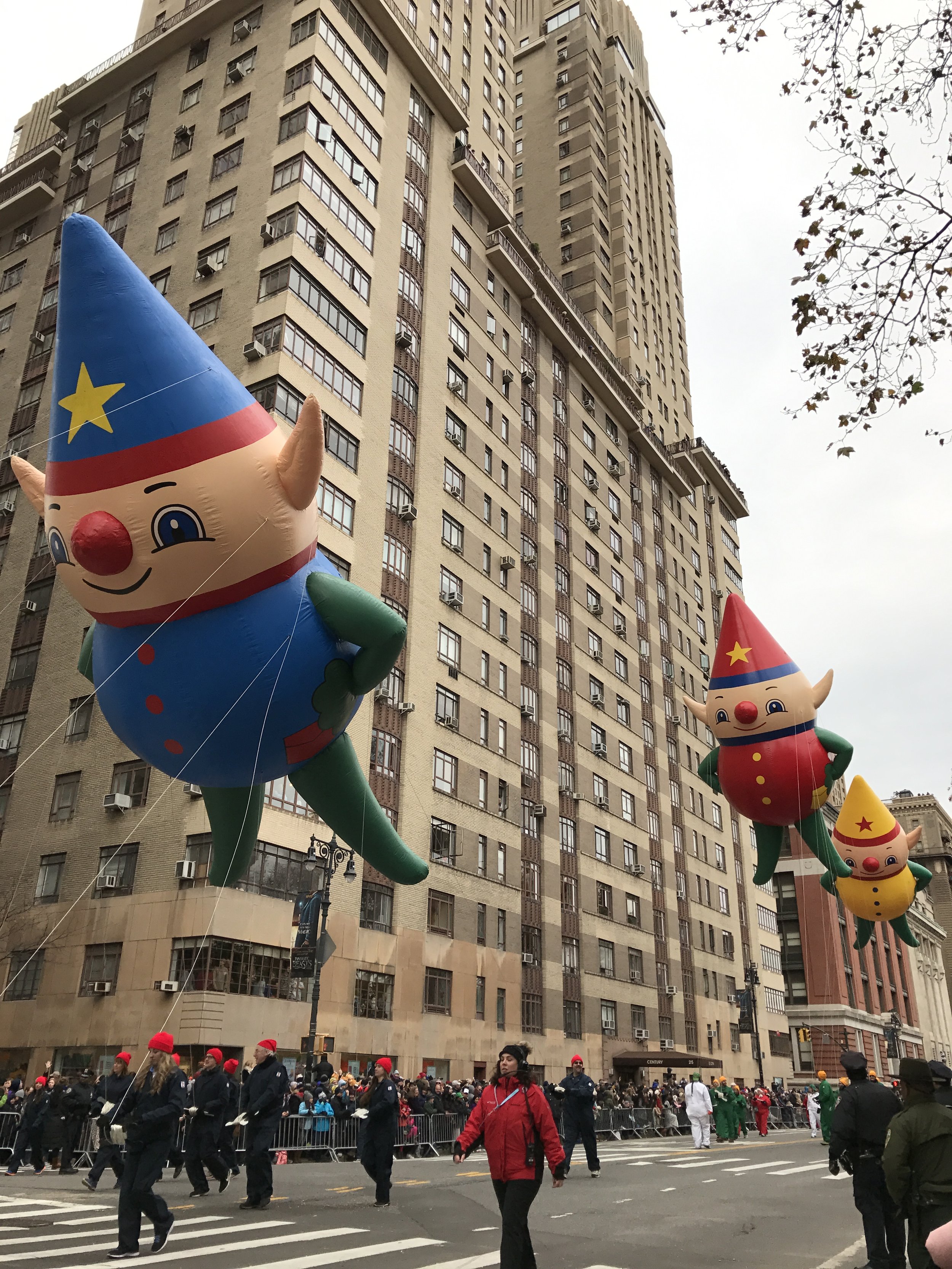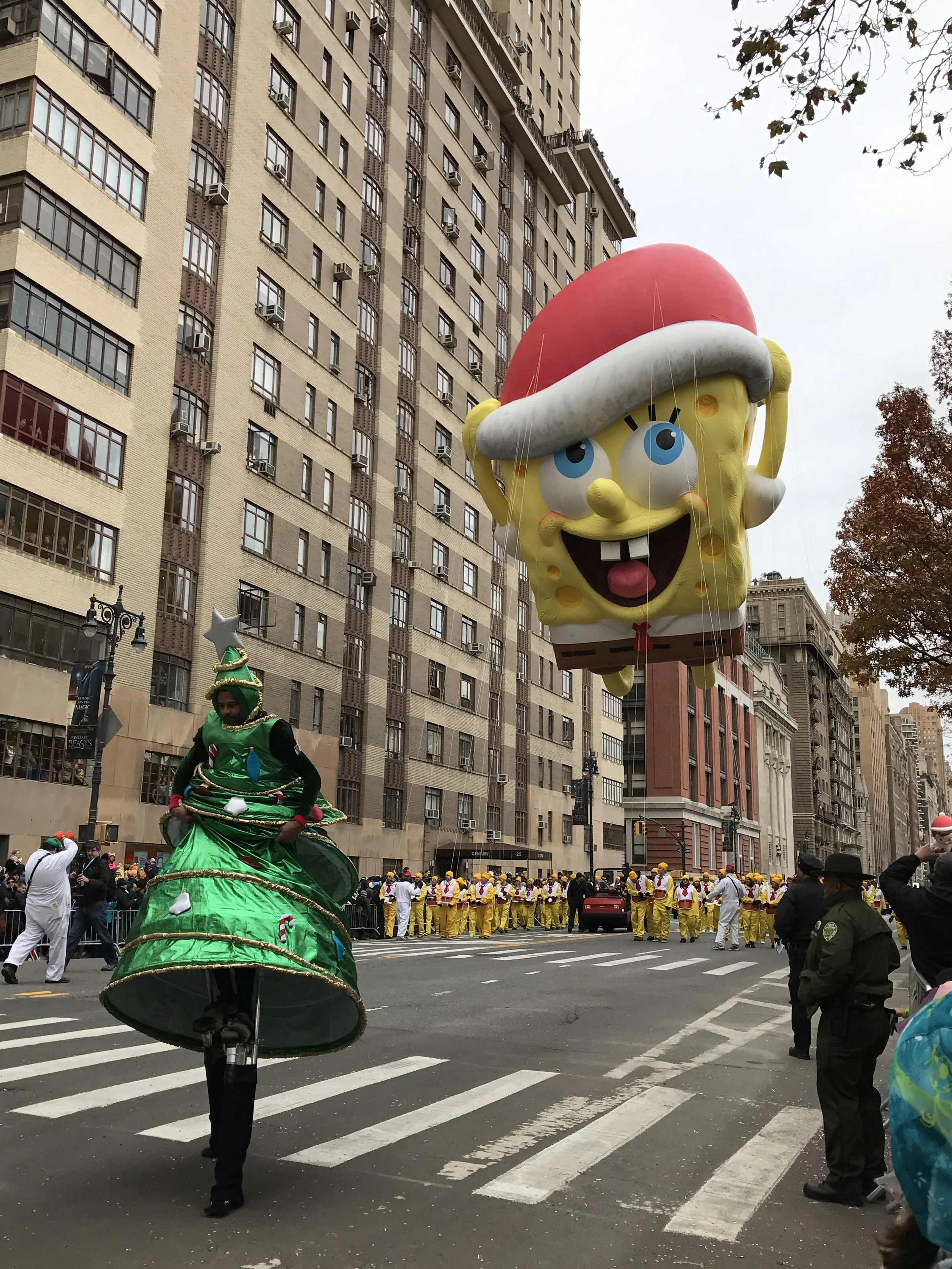We wish everyone a happy and safe Thanksgiving…
And share some archival footage from the 1968 Macy’s Parade:
Macy's Day Parade, raw footage, November 28, 1968. Recorded by Deluenthal. NYPD Photo Unit collection. NYC Municipal Archives.
We wish everyone a happy and safe Thanksgiving…
And share some archival footage from the 1968 Macy’s Parade:
Macy's Day Parade, raw footage, November 28, 1968. Recorded by Deluenthal. NYPD Photo Unit collection. NYC Municipal Archives.
The first Macy’s Thanksgiving Day Parade was held in 1924 with a parade of store employees and live zoo animals. Balloons were introduced to the parade in 1927. Here is a selection of photos taken by former staff member Ryan Rahman of the 2016 parade.
Have a happy and safe Thanksgiving!

Charlie, Kit and C.J., Macy’s Holiday Elves

Angry Birds’ Red

Pikachu from Pokémon

Eruptor from Skylanders

SpongeBob SquarePants

Thomas the Tank Engine

Wiggleworm
Mayor Fiorello LaGuardia made great use of WNYC radio to educate and inform his constituents. He is probably best known for reading the comics on the radio during the newspaper deliverymen’s strike in July 1945. But later that year, in another WNYC radio broadcast, he addressed a common problem faced by New Yorkers: how to cook a large turkey in a small apartment oven.
Turkey feed brochure. WPA Federal Writers’ Project Collection, NYC Municipal Archives.
Turkeys
By Parker Tyler
Boston Poultry Show, Grand Champion White Turkey, ca. 1939. WPA Federal Writers’ Project Collection, NYC Municipal Archives.
In the summer more than 30,000,000 turkeys are being fattened up on 600,000 farms in the United States. They are for Thanksgiving Day, and there is one for every four persons in the country. Any holiday season, the markets of the City are crammed with these sculptural birds, breast up in their crates, long-keeled, full-meated, and plucked clean.
The Pilgrim Fathers, discovering the deliciousness of the roasted wild turkey, decided, like the Aztecs, that eating them should be ceremonial. Turkeys are natives of America, their genealogy going back to prehistoric times. They were the only domesticated livestock of the Aztecs, who raised them by the thousands for religious feasts. Spanish explorers carried them first to England, and then reintroduced them to the American continent.
In Colonial times, a 55-pound turkey was not a rarity, but today, for the consumption of the smaller American family and for the smaller modern oven, the large bird has given way to one smaller in size but improved in quality. Now there is more white meat for the carver, and turkey breeders hope that a bird may be raised small enough to be sold as cheaply as pork or beef. Until they mature and take on fat, turkeys are more bones than meat.
Growth
West Washington Market, Manhattan, October 1938. Photograph by Libsohn, WPA Federal Writers’ Project Collection, NYC Municipal Archives.
There are six standard varieties of turkey bred in the United States: the Bronze—the largest and most like the wild turkey of yore; the Narragansett; the White Holland; the Bourbon Red; the Black; and the Slate. The plumage of the tom turkey in some varieties is very beautiful.
From a 2 x 2 ½ -inch egg, baby turkeys kick themselves loose from the shell in the spring. Six to eight months later they are plump and ready for the market. By careful breeding, some growers now hatch out their crop about the first of the year and send prime turkeys to market in midsummer. The raiser of turkeys must face definite hazards before the money for the bird in the egg finally reaches his hand.
Turkeys are temperamental, complaining, and quarrelsome. Not only are they susceptible to pneumonia, but they smother if the weather is too hot. The noise of an airplane motor, or loud thunder, panics a flock; when they run as fast as they can, they make greater speed than a horse. Flocks may range widely during the day but always return to the poultry yard for the evening meal. Old tom turkeys, deprived of their consorts, travel in flocks by themselves. Turkeys are more curious than cats, and seem to be lonesome when no one is around.
The Municipal Archives recently presented Feeding the City, an exhibit that featured vintage recipes and photographs, advertising brochures, and excerpts from the manuscripts of the NYC Unit of the Works Progress Administration Federal Writers’ Project unpublished book Feeding the City. Revisiting the collection in search of information the Project staff collected or wrote about Thanksgiving Day meals, revealed a draft manuscript, Turkeys, dated December 18, 1940, written by Parker Tyler and edited by Diana Hunter. It is reprinted in its entirety below.
Dressed Turkey, ca. 1939. US Dept of Agriculture, WPA Federal Writers’ Project Collection, NYC Municipal Archives.
Unpredictable maladies may carry these birds off by the thousands. They were almost exterminated in the last decade of the 19th century by the dreaded turkey disease, blackhead. By cleaning the eggs, hatching them in an incubator and segregating the poults (young turkeys) from other fowls, breeders have made great strides against this disease. Turkeys grow more rapidly and convert feed into meat more easily than any other farm animal.
Marketing
Texas now accounts for the greatest number, nearly 4,000,000; California is next with 3,000,000, while Minnesota, Iowa, Oklahoma, North Dakota, Oregon, and Ohio all produce them in millions. Most turkeys are brought alive to central plants where they are killed, dressed, and packed by modern factory methods, including an electrical killer. The killed birds go through a semi-scalder to the roughers, and from these though a waxer to the pickers.
“Here are turkeys, grown to tender plumpness in the Pacific Northwest, undergoing a rigid inspection in one of A&P’s great New York City warehouses. The keen eyes and educated hands of this practiced inspector will detect any possible flaw in the bird, and condemn it for delivery to the store if any flaw shows up…” Photograph from A&P, WPA Federal Writers’ Project Collection, NYC Municipal Archives.
Freight, truck and boat bring turkeys to the markets of New York City, where their largest sale is during November and December; in other months they are second to chicken. Live turkeys, transferred in baskets accommodating 15 to 22 birds, are sold only to licensed slaughter-houses in New York City.
Young tom turkeys weight from 13 to 19 pounds, young hens 8 to 11 ½ pounds with little difference in their taste. Young hens and toms are birds less than a year old, having soft meat and a flexible breastbone; mature birds have hardened breastbones and less tender meat. Within these classifications are four grades fixed by the U.S. Government; Special, Prime, Choice, and Commercial. On the whole, a turkey hen is preferable, being fatter with smaller bones. A young turkey has black feet; pink feet denote the turkey is from one to three years old; grey feet more than three years old. A live turkey shrinks about 10 per cent when it is bled and plucked and 20 per cent more when dressed, drawn, and ready to roast.
Turkey prices are fairly steady throughout the year, usually varying not more than 5 cents a pound. The City housewife pays from 29 cents a pound to 32 cents. Smoked turkey, a recent delectable addition to the holiday menu, prepared in pickling brine and smoked like pork, is an expensive dish at $1.25 a pound.
The draft manuscript was accompanied by ephemera such as a pamphlet of turkey recipes prepared by the New York State Department of Agriculture.
Other than a brief 3-year hiatus during World War II, the Macy’s Thanksgiving Day Parade has marched through Manhattan since 1924. The first balloons appeared in 1927, in a variety of animal shapes, but the first recognizable cartoon character was Felix the Cat, introduced in 1931. Starting in 1928 the balloons were released into the air at the end of the parade. That year they burst, but they were redesigned for 1929 with valves that allowed them to stay airborne for days. Macy’s would give a gift to whoever found the balloons and mailed them back. In 1932, after an all-too predictable incident with a balloon colliding with a plane over Queens, the practice was ended.
Happy Thanksgiving from the NYC Municipal Archives.